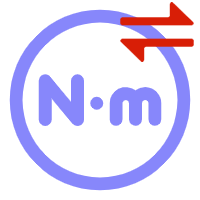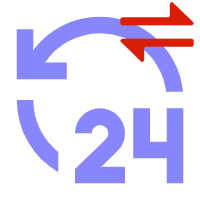
Foot Pound to Newton Meter Converter
Convert foot-pounds to newton meters with our torque converter. Perfect for engineering, automotive work, and torque specifications. Get accurate results.
Foot-Pound to Newton Meter Converter
Enter foot-pound value and click Convert to get Newton meters.
Enter the foot-pound value to convert
Relationship Between Foot-Pound and Newton Meter
The conversion between foot-pounds and Newton meters involves converting between imperial and SI units. The foot-pound (ft·lb) is commonly used in the United States, while the Newton meter (N·m) is the SI unit of torque.
1 ft·lb = 1.35582 N·m
Therefore, to convert foot-pounds to Newton meters, we multiply the value in foot-pounds by 1.35582.
For example, 1 foot-pound equals approximately 1.3558 Newton meters, and 100 foot-pounds equals approximately 135.58 Newton meters.
Foot-Pound
What is a Foot-Pound (ft·lb)?
A foot-pound (symbol: ft·lb) is a unit of torque in the imperial system, representing the rotational force of one pound applied at a perpendicular distance of one foot from the axis of rotation. It equals approximately 1.35582 Newton meters. Foot-pounds are widely used in the United States for automotive, mechanical, and engineering applications.
History and Origin
The foot-pound has been used for centuries as a measure of work and torque in English-speaking countries. It derives from the imperial system's basic units of force (pound-force) and distance (foot). While the term 'foot-pound' can refer to both work (energy) and torque, context usually makes the meaning clear. In torque applications, it's sometimes written as 'pound-foot' (lbf·ft) to distinguish it from the energy unit, though foot-pound (ft·lb) remains more common in everyday use.
Modern Applications
Foot-pounds are the standard unit for torque specifications in the United States and some other countries using imperial measurements. Common applications include: automotive lug nuts (80-100 ft·lb), engine cylinder head bolts (50-90 ft·lb), bicycle pedals (30-35 ft·lb), oil drain plugs (15-25 ft·lb), and various machinery fasteners. Torque wrenches are typically calibrated in foot-pounds for these applications. While most countries have adopted the metric Newton meter, foot-pounds remain dominant in American automotive and mechanical industries.
Newton Meter
What is a Newton Meter (N·m)?
A Newton meter (symbol: N·m) is the SI unit of torque, representing the rotational force of one newton applied at a perpendicular distance of one meter from the axis of rotation. It is the fundamental unit for measuring torque in the International System of Units and is used worldwide for scientific and engineering calculations.
Origin and Definition
The Newton meter is derived from the SI base units: force (Newton) and distance (meter). It was established as part of the International System of Units to provide a consistent, universal standard for torque measurements. One Newton meter equals one joule (the SI unit of energy), though the two measure different physical quantities—torque is a vector while energy is a scalar.
Current Use
Newton meters are the standard unit for torque specifications worldwide, except in countries primarily using imperial units. Common applications include: automotive engine torque (100-500 N·m), industrial machinery (50-5,000 N·m), bicycle components (5-50 N·m), electric motors (10-1,000 N·m), and precision instruments (0.001-10 N·m). The unit is preferred in scientific research, international engineering standards, and most modern manufacturing industries. Torque wrenches and measuring instruments globally are calibrated in Newton meters for precision and consistency.
Foot-Pound to Newton Meter Conversion Table
The conversion of foot-pounds to Newton meters for certain values are provided below:
- Foot-Pound [ft·lb]
- Newton Meter [N·m]
- 1 ft·lb
- 1.3558 N·m
- 5 ft·lb
- 6.7791 N·m
- 10 ft·lb
- 13.5582 N·m
- 15 ft·lb
- 20.3373 N·m
- 20 ft·lb
- 27.1164 N·m
- 25 ft·lb
- 33.8955 N·m
- 30 ft·lb
- 40.6746 N·m
- 40 ft·lb
- 54.2328 N·m
- 50 ft·lb
- 67.791 N·m
- 60 ft·lb
- 81.3492 N·m
- 70 ft·lb
- 94.9074 N·m
- 80 ft·lb
- 108.4656 N·m
- 90 ft·lb
- 122.0238 N·m
- 100 ft·lb
- 135.582 N·m
- 150 ft·lb
- 203.373 N·m
- 200 ft·lb
- 271.164 N·m
- 250 ft·lb
- 338.955 N·m
- 300 ft·lb
- 406.746 N·m
- 400 ft·lb
- 542.328 N·m
- 500 ft·lb
- 677.91 N·m

Conversion Calculators














































